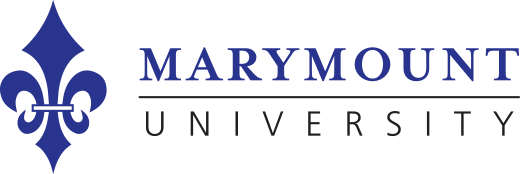16 Careers For Ed.D. Graduates

Originially published on October 23, 2020 and refreshed on June 2024.
Across a broad spectrum of industries, motivated professionals prioritize their ongoing development and career advancement opportunities. Individuals with their eyes on new roles and a desire to create positive change in the world know that these goals require ongoing investment in new knowledge and skills. Earning a Doctor of Education (Ed.D.) is one of the primary paths to developing new forms of leadership better suited to respond to the needs of rapidly evolving societies.
Graduate education can present challenges for working professionals. Many may not have geographical access to the kinds of programs that would be most suited to pursuing desirable Ed.D. careers. However, an online doctorate of education offers prospective candidates the opportunity to balance their careers and academic pursuits as they apply best practices and new skills in their day-to-day professional settings.
By completing an Ed.D. program, you can acquire the knowledge and skill set to stand out among other candidates and excel in public or private sector equipped with tools to solve problems of practice related to your field of study. And that, of course, is the goal — to maximize your career potential while making a meaningful and lasting impact in your community and in the world.
Complete The Form to Access Your Online Ed.D. Program Guide
What Can You Do With a Doctorate in Education?
Graduates with an advanced degree enjoy a wide range of Ed.D. career opportunities and the confidence to promote change across diverse instructional and organizational settings.
After earning your Ed.D. degree, you can continue to impact the next generation by accepting a role in primary, secondary, or postsecondary education. You can also consult in the field of education, becoming a curriculum specialist or academic consultant. If you want to meet a specific need in your community, you could pursue a nonprofit director role. You can help others in the workplace by accepting an HR director position, or you can impact the political landscape by becoming a policy analyst.
Whatever your passion, an Ed.D. can help you pursue a rewarding career.
Average Doctor of Education Salary
Earning an Ed.D. opens doors to leadership roles in the fields of education, business, nonprofit work, consulting, and more. Depending on your chosen career path, your average salary could range from $65,000 to more than $100,000. Jobs available to those with Ed.D. degrees are financially rewarding, and opportunities for Ed.D. graduates are on the rise. These careers also allow leaders to inspire change, educate others, and make a positive impact within their communities.
Skills You Learn in an Ed.D. That Will Benefit Your Career
An online doctorate in education program enables professionals to enhance their leadership capacities to effect change while continuing to balance work, family and community responsibilities. An Ed.D. program models collaborative processes, emphasizes problem-solving and explains how to help schools and organizations adapt to changing external environments.
The curriculum in a doctorate in education program will explore subjects relevant to your current professional position and provide skills that lend to future Ed.D. career pursuits. Areas of focus include:
- Effective organizational leadership
- Leadership that embraces and brings about social justice
- Transformative leadership: producing meaningful change
- Applying educational theory to organizational health and innovation
- Crisis leadership
- Ethical leadership and social responsibility
- Systems thinking
- Change management
- Cultivating future leaders within an organization
- Education policy
- Succession planning
- Importance of human and social capital
Throughout your Ed.D. program, you will also develop and hone valuable soft skills such as:
- Conflict resolution
- Empathy
- Organization
- Communication
- Leadership
- Problem-solving
- Collaboration
You will find yourself transformed into a research-based scholarly practitioner.
What Are the Differences Between an Ed.D. and a Ph.D. in Education?
Both an Ed.D. and a Doctor of Philosophy in Education (Ph.D.) are terminal, post-graduate programs that offer deeper knowledge in the field of educational leadership. But there are several critical differences between the two that you should consider carefully.
The primary consideration when considering the differences between an Ed.D. and a Ph.D. is professional outcome. If you’ve decided that a doctorate in education job might be a wise path for you, it is important to envision what kind of work you ultimately hope to do and in what setting.
An Ed.D. is designed to equip those interested in hands-on leadership in education, nonprofit, government and even business settings. Some of the advantages of an Ed.D. include:
- Practical application is emphasized over theory
- Research is applied to real-world settings
- Students can continue full-time work throughout the program
- Collaboration with fellow classmates is encouraged to solve problems of practice
A Ph.D. in education is designed to emphasize research, both during the program and in subsequent career pursuits. It tends to emphasize theory over practice and is aimed at producing academic researchers in more focused areas of study. Some of the characteristics of a Ph.D. include:
- Research intensive
- More common career path to a research scholar or policy researcher
- Potential funding options to focus on full-time research
Another notable difference between the two is that a Ph.D. often requires significantly more credit hours and time — sometimes twice as much time — than an Ed.D. On average, Ed.D. programs require 60 credits and can be completed in three years or more, while Ph.D. programs require 90 credits and usually take five years or more.
16 Rewarding Ed.D. Careers
By earning a Doctor of Education, graduates can prepare themselves for Ed.D. careers with lasting impact — on students and the future of a college, university, organization or community.
An Ed.D. signals to employers that a candidate is a thought leader; someone who is dedicated to pursuing innovations in higher education and who has demonstrated the capacity to identify a problem and offer relevant insights for practical solutions. An Ed.D. can prepare graduates with educational and organizational leadership skills for leadership roles across various institutions and industries.
1. Corporate Trainer
Corporate trainers, who may also be called training or development specialists, work in nearly every industry. Their job responsibilities may include:
- Planning and administering programs to improve employee skills and knowledge
- Assessing training needs
- Designing and developing training materials
- Collaborating with employees to best address their training needs
Corporate trainers often pursue Ed.D. careers after having worked as teachers or in areas such as staff development or instructional design. While post-graduate degrees and certifications are not required, they may lead to faster career advancement or more job opportunities.
These professionals enjoy the opportunity to facilitate greater employee satisfaction, educate large numbers of people, and contribute to company success through their work.
The median annual salary for corporate trainers was $63,080 in May 2022, according to the BLS. Roles for corporate trainers are expected to grow by 6% from 2022 to 2032.
2. Chief Learning Officer
Some organizations have set out to increase their competitive edge. Chief Learning Officers “steer the learning journey, in line with business.” CLOs coordinate and deliver training programs and opportunities and demonstrate to their fellow top-level colleagues how such training impacts the bottom line, customer satisfaction and employee experience.
According to Continu, “The role of a Chief Learning Officer is growing as more organizations recognize the need for learning and development to be central to their success.”
According to the BLS, training and development managers, including chief learning officers, make a median annual salary of $120,000 as of May 2022. There is a projected 6% career growth between 2022 and 2032.
3. Training and Development Manager
Training and development managers work with educational institutions and learning programs to develop and educate employees. They often oversee a team of specialists, so this role requires both experience and leadership skills.
Educators must also continue their own education and training, and training and development managers provide qualified support in helping teachers, professors, and administrators meet benchmarks and excel in their roles.
As of May 2022, the BLS reported that training and development managers make a median annual salary of $120,000, with the top 10% of earners bringing in more than $210,470 annually.
4. Director of a Civic, Nonprofit or Grantmaking Organization
Hiring boards for such organizations often prefer candidates with advanced degrees. A doctorate of education can equip graduates with the theoretical framework and practical problem-solving skills necessary to lead an organization effectively. The program’s emphasis on strategy, systems, change and bringing about social justice will prepare students who want to pursue organizational leadership roles of this nature.
The charitable sector in the United States trails only behind business in terms of percentage of the workforce — 6.5% of the workforce works in the charitable sector. That represents a contribution of 1.4 trillion dollars to the economy as of the fourth quarter of 2022.
According to the BLS, top executives, including organizational directors, earn a median annual salary of $100,090 as of May 2022.
5. Human Resources Director
Graduates of a doctorate program who desire an Ed.D. career that allows them to craft policies, shape corporate culture and coordinate training programs and activities may find a human resources manager or director role to be an ideal fit. Human resources (HR) directors also ensure company compliance with legal policies, so Ed.D. degree holders interested in legislation may consider such a role.
The BLS reports that HR managers earn a median annual salary of $130,000 as of May 2022. Human resources manager roles are expected to grow 5% between now and 2032.
6. Education Policy Analyst
Education policy analysts work within school systems, at think tanks, in lobbying organizations, for nonprofit organizations and in the private sector. Such analysts research educational topics, evaluate the effects of education policies and conduct research to produce reports and articles. These analysts may focus on a specific area of education, or they may conduct a more general analysis of the state of education and possibilities for the future.
According to the BLS, political scientists in the education sector earn a median annual salary of $78,140 as of May 2022. The projected career growth is 7% between 2022 and 2032.
7. Instructional Coach
Instructional coaches work in advisory roles, working with teachers and professors to bring best practices into classrooms and lectures. They observe educators as they teach, providing them with valuable feedback and offering further instruction as needed. Most instructional coaches began as education administrators, so this is a promising second career path after earning your Ed.D.
Like many other instructional coordinators, instructional coaches earn a median annual salary of $66,490 as of May 2022, according to the BLS.
8. K-12 School Leaders
Education professionals who aspire to serve as school leaders or superintendents of schools usually need to earn a doctorate in education. The emphasis on leadership and problem-solving in most Ed.D. programs makes them ideal preparation for superintendents, directors of education and other school leadership positions.
According to the U.S. Bureau of Labor Statistics (BLS), school principals earn a median annual salary of $101,320 as of May 2022. The BLS projects 3,300 new roles will be filled between 2022 and 2032.
9. Postsecondary Administrator
Earning a doctorate in education is often necessary to ascend to administrative positions in college and university settings. Postsecondary administrators oversee a variety of educational services at colleges or universities. They may work in admissions, as registrars, or in student affairs.
The BLS reports that postsecondary administrators earn a median annual salary of $99,940 as of May 2022. Employment for these roles is expected to increase by 4% between 2022 and 2032.
10. College or University President
Presidents at postsecondary institutions oversee both administrative and academic affairs at their place of employment. They must have excellent leadership and decision-making skills, as they face high-level decisions almost daily. Presidents may also be responsible for spearheading fundraising efforts and contributing to long-term planning for the school as a whole.
According to the BLS, the median annual wage for all postsecondary education administrators was $99,940 as of May 2022. Due to the prestigious nature of this role, many college and university presidents will receive a higher annual salary than the national average.
11. College or University Provost
Provosts in postsecondary education are also referred to as vice presidents or chief academic officers. They work with the school president to oversee budgets, manage faculty and tenure, and create school policies. Provosts work full-time at both public and private colleges and universities.
The BLS reports that the median annual wage for all postsecondary education administrators was $99,940 as of May 2022, and provosts are reported to bring in annual salaries that are higher than this average.
12. Curriculum Specialist
Curriculum specialists oversee the development of curricula and teaching standards. They identify learning goals, select curricula, and measure student progress and success based on the materials offered within a specific course or program. In many cases, curriculum specialists consult with various experts on the subject matter they oversee to ensure the proper student learning outcomes.
The BLS reports that all instructional coordinators, including curriculum specialists, earn a median annual salary of $66,490 as of May 2022. The BLS predicts a 2% increase between 2022 and 2032.
13. Instructional Designer
While curriculum specialists select and develop curricula, instructional designers oversee the implementation of those curricula, develop materials and activities that support it and ensure teaching standards are met. The challenges of guiding educators in implementing curriculum and teaching methodology and analyzing student data to assess and improve learning outcomes will be better met with an Ed.D.
The BLS reports that all instructional coordinators, including instructional designers, earn a median annual salary of $66,490 as of May 2022. The BLS predicts a 2% increase between 2022 and 2032.
14. College Professor
When considering Ed.D careers, one of the first that comes to mind is the role of a college professor. College professors teach at community colleges, colleges or universities within a specific subject area at the undergraduate or graduate level. As employees of a college or university, their responsibilities may also include:
- Developing curriculum and course material
- Mentoring students
- Conducting research and publishing journal articles
- Serving on academic or campus life committees
- Writing grant proposals
Most four-year colleges and universities require their professors to hold a doctoral degree in the field they want to teach. Aspiring college professors will also want to conduct regular research in their field and participate in committees and conferences.
According to the BLS, college professionals have a median annual salary of $79,460 as of May 2021. Roles for college professors are expected to grow 8% between 2022 and 2032, faster than the average for all occupations.
15. Dean of Students or Faculty
Deans of Students or Faculty is a doctor of education job within a college or university that oversees campus programs. As education administrators, academic deans support either students or faculty to facilitate a positive experience for all on campus. Their job responsibilities may include:
- Meeting with students to discuss their needs
- Directing the admissions process
- Collaborating with departments to enhance the student or faculty experience
- Planning campus life activities that boost student or employee morale
- Administering and enforcing conduct policies
- Intervening with students at risk of attrition or struggling faculty members
Deans of Students or Faculty often hold a doctoral degree in educational leadership. Their professional background may include years of working as college professors or in education administrator roles.
According to the BLS, jobs for postsecondary education administrators earn a median annual salary of $99,940 as of May 2022. The career is expected to grow by a rate of 4% between 2022 and 2032.
16. Academic Consultant
Academic, education or learning consultants may work for independent firms, school districts, product-driven firms or government agencies. Their job responsibilities may include:
- Advising teachers, parents, school administrators, school boards and government officials on educational best practices
- Assessing education standards and policies to make recommendations for improvement
- Implementing data-driven changes in schools or districts
- Recommending materials, technology or programs
To compete for Ed.D. careers as an education consultant, graduates often earn master’s degrees or higher. They may have a background in teaching. Independent academic consultants often register with national organizations for education consultants.
Payscale reports a median annual salary of approximately $66,9400 for education consultants. While there is not a specific listing for academic consultants, the BLS estimates a growth rate of 7% for employment in education, training and library occupations from 2021 to 2031.

Pursue Doctor of Education Jobs
Pursuing an Ed.D. career is an opportunity to make a meaningful difference within your field. Working within doctor of education jobs that influence the future policies, programs and standards of education, graduates can set the course for investment in quality education, allowing both teachers and students to reach their personal and professional goals.
The ideal doctorate in education program will prioritize academic excellence while taking a holistic approach to student learning and development. It will offer a unique opportunity to cultivate deep roots of servant and ethical leadership as part of your personal and professional growth plan.
Marymount University’s Doctor of Education in Educational Leadership and Organizational Innovation offers an ideal opportunity to earn an Ed.D. in a convenient format. You can earn a doctorate in education entirely online in less than three years.
The online Ed.D. program at Marymount is a strategically designed educational experience that integrates research, theory and practice to empower leaders to solve real-world problems. Start building your school or organization’s capacity for high performance and continuous improvement.
Become a leader who can respond to uncertain futures and new challenges with an Ed.D. online from Marymount University.
